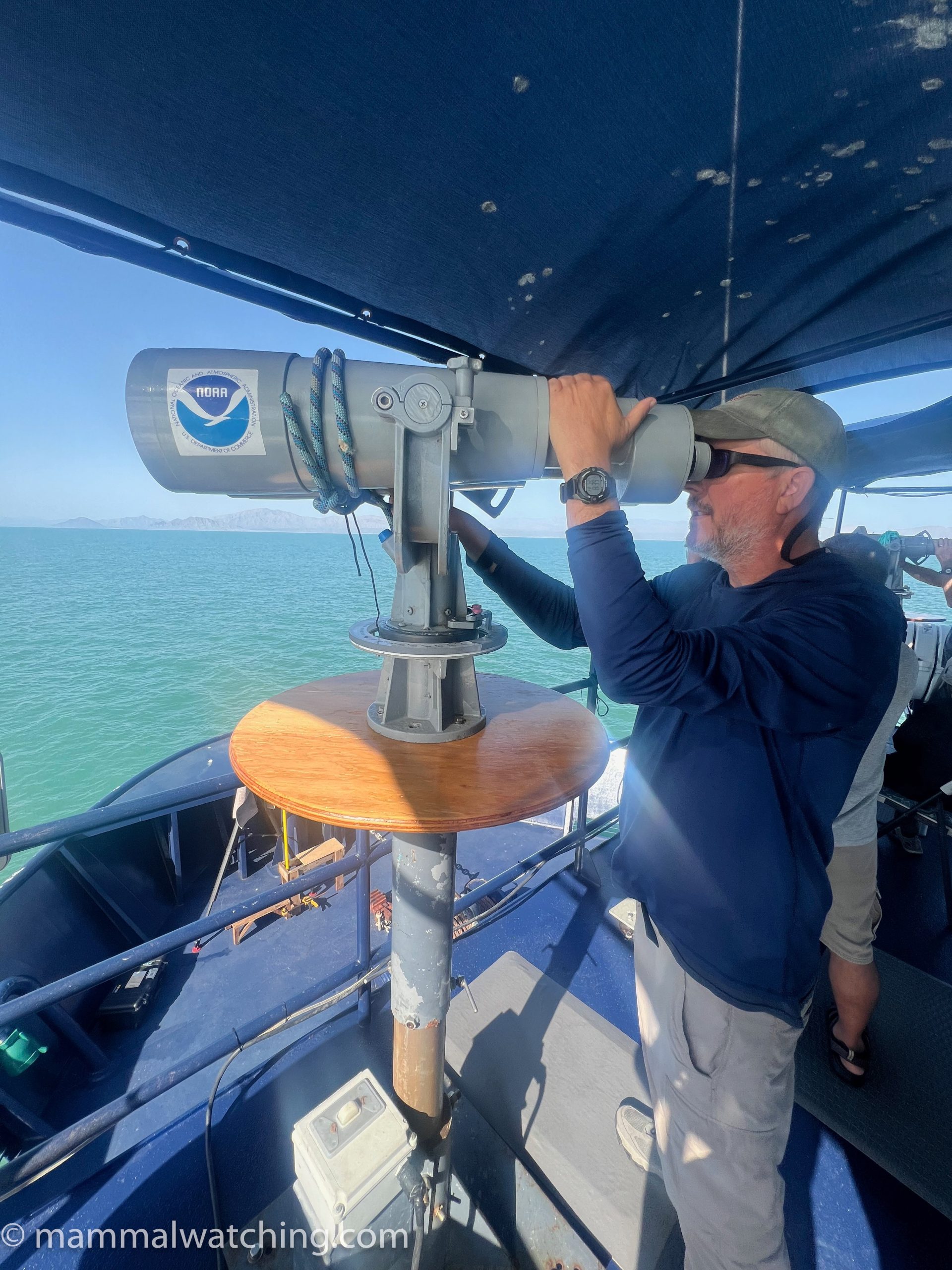
Mexican Mega Marine Mammaling, 2024

Dwarf Sperm Whales, Kogia sima
Here’s a short report on brief trips to Baja California South and North in search of two very special cetaceans.
Baja California South: Dwarf Sperm Whales
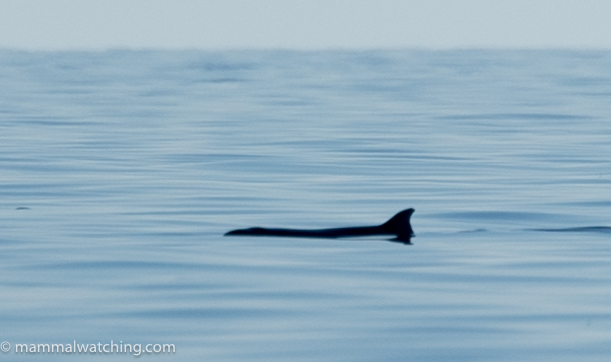
Dwarf Sperm Whale, Kogia sima
One of the way too many lists that govern my life is a desire to tick off all 167 mammalian families. In May 2024 I had just 12 left to see, including the Kogiidae: the Dwarf and Pygmy Sperm Whales. These two species, especially the dwarf, are not uncommon. They are widespread across tropical and temperate seas but notoriously difficult to see: small, unobtrusive and shy and the only realistic chances of spotting one is in flat calm conditions. The Maldives and Sri Lanka for instance seem to be quite good for both species in the right seasons. But they would be a bit of a stretch for a weekend trip from New York.
Enter Claudia Diaz. Claudia is one half of the (fabulous) Wild About Colombia (WAC) team, who ran my superb trip through south and central Colombia in 2020. But before WAC, Claudia spent 10 years in a marine mammal research lab in Baja. So when she told me that kogia species were quite fairly easy to see near La Paz from mid May to mid August (when there is typically very little wind) I believed her. Sixty seconds later I had invited myself down to Baja to look for them. Claudia was spending a few months in Baja over the spring and very kindly ‘offered’ (I am pretty sure I suggested it first … I have no shame) to organise some kogiawatching. She would find a boat and come out to look with me and WAC very generously paid for one of the two days we were at sea.
Claudia’s many contacts down there recommended we focus our effort in the Bahia Los Muertes (the Bay of the Dead) near the small town of La Ventana. Whale watching on the east side of the peninsula is totally ungoverned. Several operators specialize in taking tourists out in search of the resident orcas for example and letting them jump into the water on top of them. It is an accident waiting to happen. So Claudia took care to choose the right operator: she found Felix, a fisherman looking to move into ecotourism. He was excellent and you can reach him on Whatsapp (he speaks only Spanish I think).
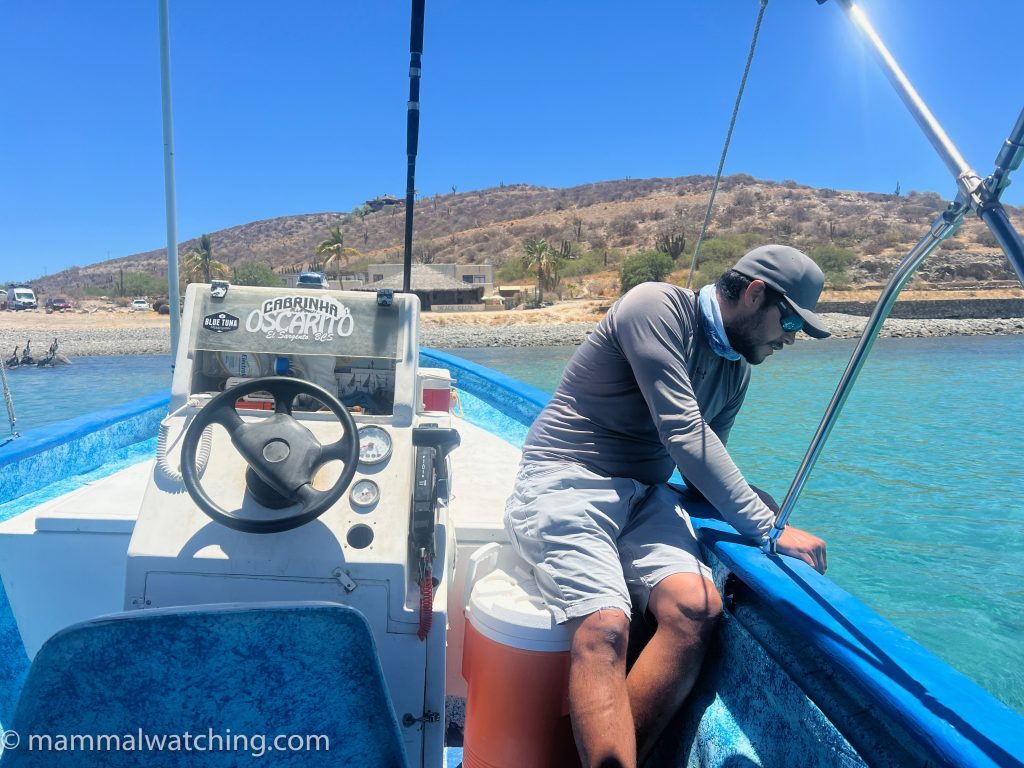
Captain Felix
Claudia suggested we book Felix for 2 mornings in case the weather wasn’t great. And I booked a small cabin through Airbnb in the town of La Ventana, a popular kite surfing destination in the winter. Obviously a kitesurfing town is famous for its wind, and wind is the last thing you need if you want to see kogia. But the wind here is predictable and from mid May to mid August there is generally very little.
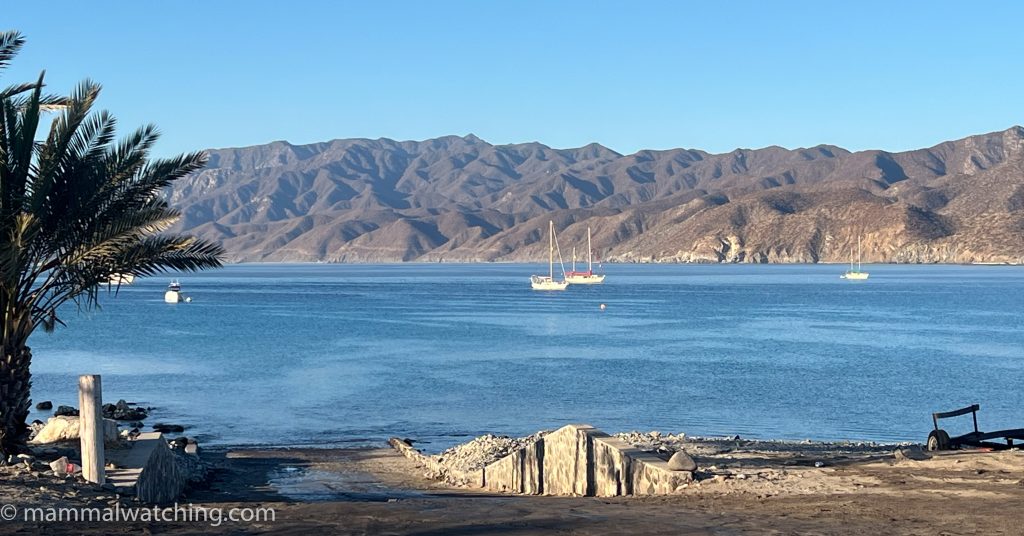
Bahia Los Muertes
I was worried about the chances of actually finding a whale (of course I was). It seemed almost preposterous to think we could find a kogia in just two mornings. But the weather on Saturday was excellent and the sea flat calm. We left in Felix’s boat at 630 am and he roared out to see. About 8 minutes later he cut the engine and nonchalantly said something in Spanish along the lines of “there they are”. A group of three Dwarf Sperm Whales were logging a few hundred metres in front of us. Quite possibly my biggest mammalwatching anticlimax. Don’t get me wrong: I am not complaining! But it would have been nice to have searched for at least 30 seconds myself before finding our first animals. I was still getting my camera out when he spotted these and hadn’t even started looking!
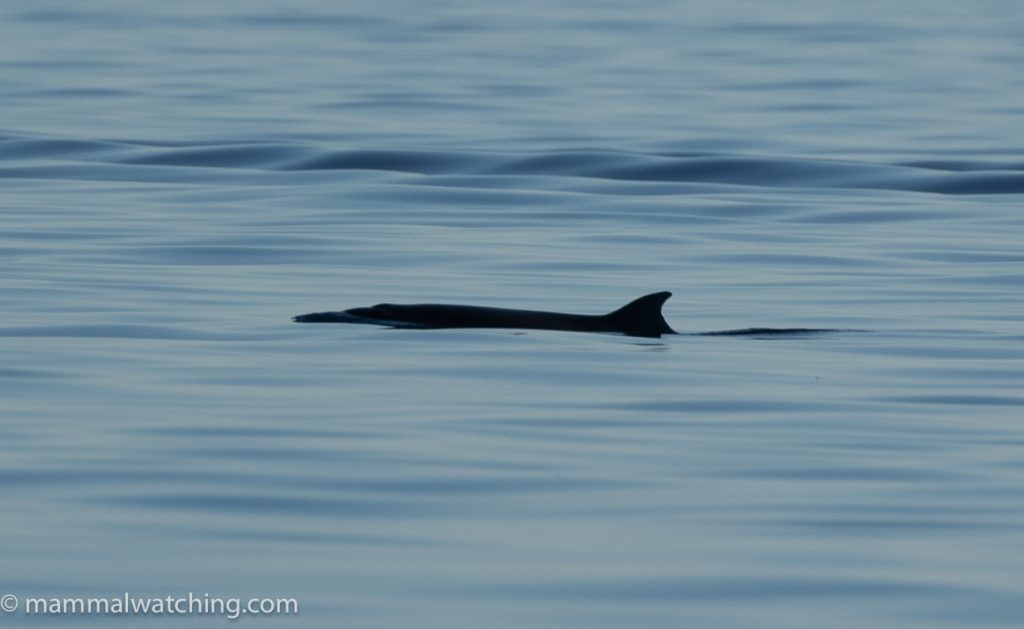
Dwarf Sperm Whale, Kogia sima
My lucky hat strikes again.
We had the boat for 6 more hours and spent the morning patrolling an area about 1 to 3 miles offshore.
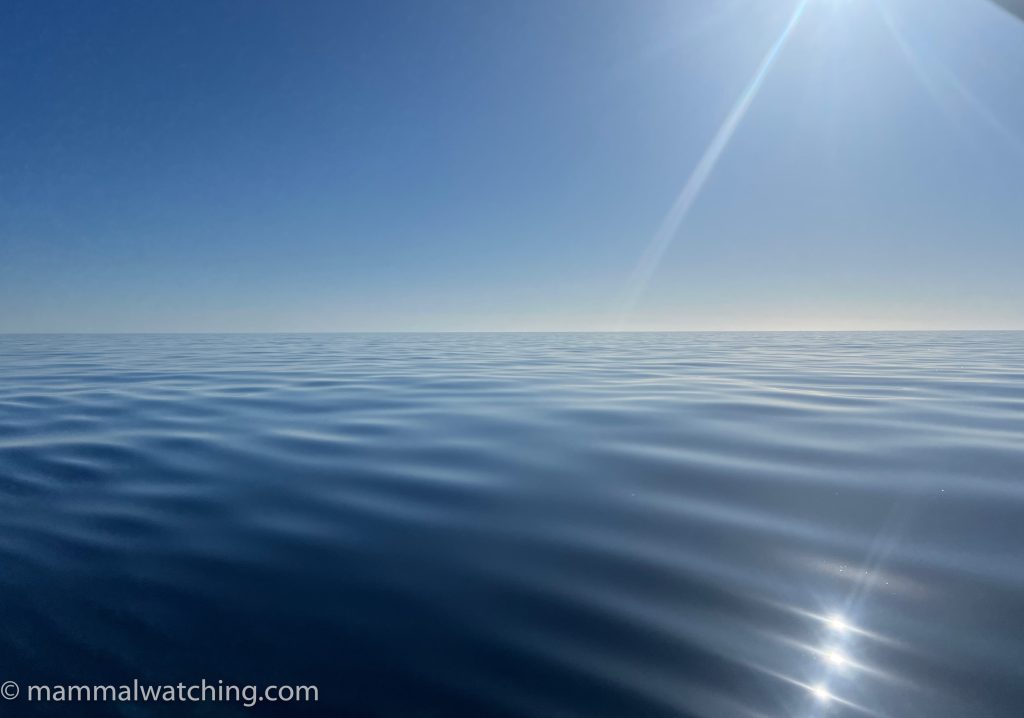
Perfect kogiawatching conditions
The sea was like glass for the first few hours before a very gentle breeze started up mid-morning which was enough to hide the kogia. Even a few ripples on the surface (as in the photo below) made spotting them noticeably more difficult. But over the course of the morning we had 10 sightings. Difficult to know how many different animals we saw, But at least 5 and probably more. None of the sightings was close. The kogia were very difficult to approach and are famously shy. For instance one animal, at least 400 metres away, dived when I dropped my binoculars onto the bottom of the boat.
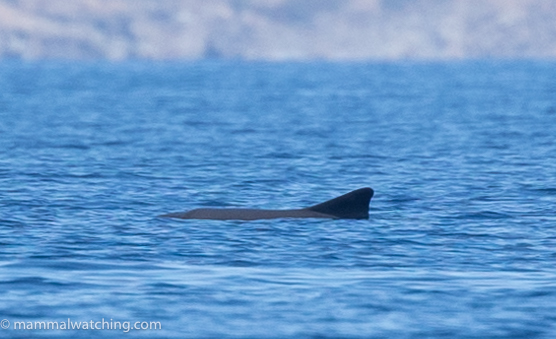
Dwarf Sperm Whale, Kogia sima
We went out the next morning and saw three more animals. There was a little more wind which may explain the fewer sightings. Both species of kogia are found in this bit of the Sea of Cortez. Claudia felt that she had seen more Dwarf than Pygmy Sperm Whales over her years in Baja and could not recall ever seeing both species on the same day. They can be separated by the size and position of their dorsal fins though that might be easier said than done and probably needs the help of experts.
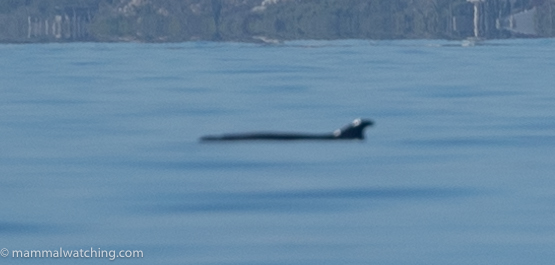
Dwarf Sperm Whale, Kogia sima
As you can see from my pictures there is quite a lot of variability in the dorsal fins of Dwarf Sperm Whales. I tried hard to turn the animal above – seen on our second day – into a Pygmy Sperm Whale. Its fin seemed more falcate than the other animals we had seen. But Todd Pusser (see Baja North below) confirmed it was another Dwarf. Todd also told me that Pygmy Sperm Whales were even shyer than the Dwarf flavour and there were very few decent pictures of them.
Claudia and I were not looking for other wildlife but we saw California Sealions and Bottlenose Dolphins while we were out on the water as well as turtles galore and these Blue Glacus sea slugs that Felix fished out of the water on the end of a machete.
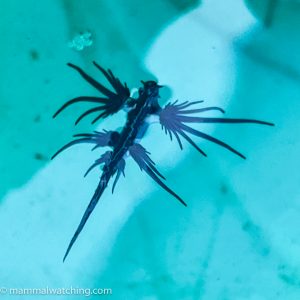
Blue Glaucus (I think)
Other boats were on the radio talking about Sperm Whales 20 miles off shore and a pod of the resident Orcas were seen closer in. We made no effort to go see these, while around our AirBnB in La Ventana we saw a few Black-tailed Jackrabbits and White-tailed Antelope Squirrels.
You can contact Wild About Colombia if you would like Claudia to help set up a kogia trip for you. A massive thanks to her for organizing it all, guiding me and being great company. Also a big thanks to WAC for paying for the boat on our first day.
Baja California North: Vaquitas
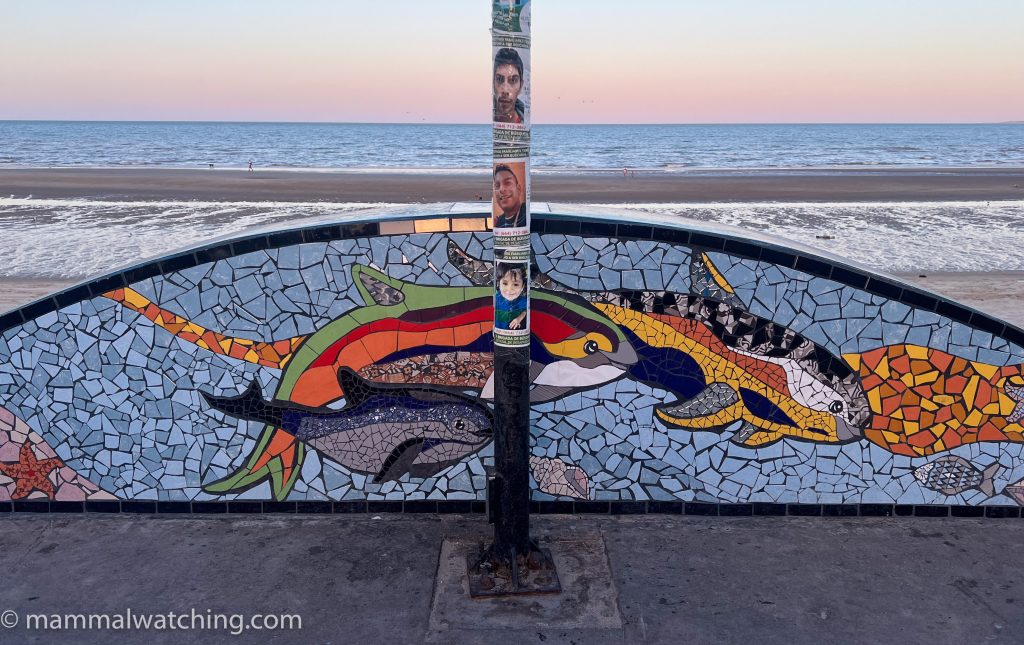
Vaquita mural, San Felipe
Meanwhile a thousand or so kilometres to the north …..
When Claudia and I were fine-tuning our plans for our kogia weekend I got a text message from cetacean expert, photographer and all round great guy, Todd Pusser. I first met Todd in 2022 when he showed Charles Foley and me around Alligator River National Park and successfully found us a Red Wolf. Todd also suggested that Bob Pitman come on the mammalwatching podcast (one of my favorite episodes). Todd was already in the mammalwatching hall of fame. So when he mentioned he was working on the annual Vaquita survey in mid-May, I asked – half-jokingly – if there was any chance of a spot on the boat. As I had expected Todd thought it was very unlikely. But, as I had not expected, he said he would ask.
I had never seriously entertained the idea that I could ever see a Vaquita: the smallest and rarest cetacean species in the world and quite possibly the rarest mammal. At the start of 2024 there were thought to have been fewer than a dozen animals left in the northern Gulf of California. And even if I could have gotten out to sea to look for them they are so small, and so few in number, that it would be extremely difficult to spot one without the assistance of a team of scientists, a large ship and some super-powered optics.
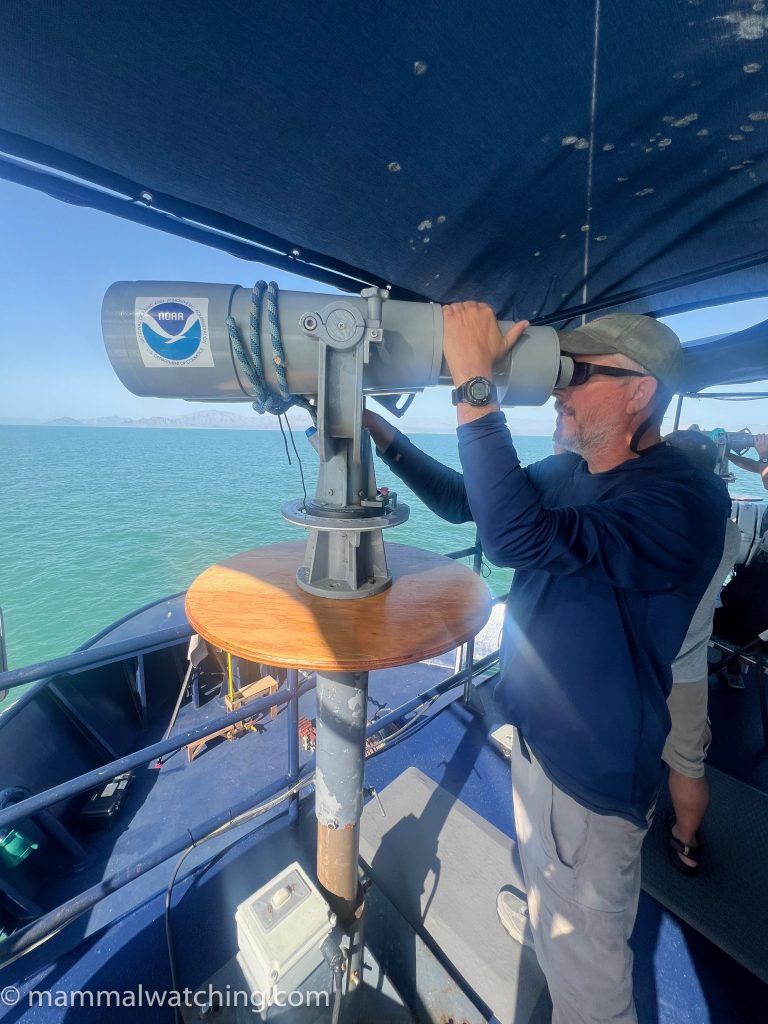
Todd Pusser on the ‘Big Eyes’
The complicated tragedy of the Vaquita is a case study in why conservation can be very very difficult. I won’t attempt to explain everything here but the local fishing industry, supported by Mexican drug cartels, are driving the species to extinction. The industry is fueled by demand in China, where people pay a fortune for the over-sized swim bladders of the Totoaba fish that shares the sea with the Vaquita. The 2019 documentary Sea of Shadows tells the story, as will the next episode of the mammalwatching podcast.
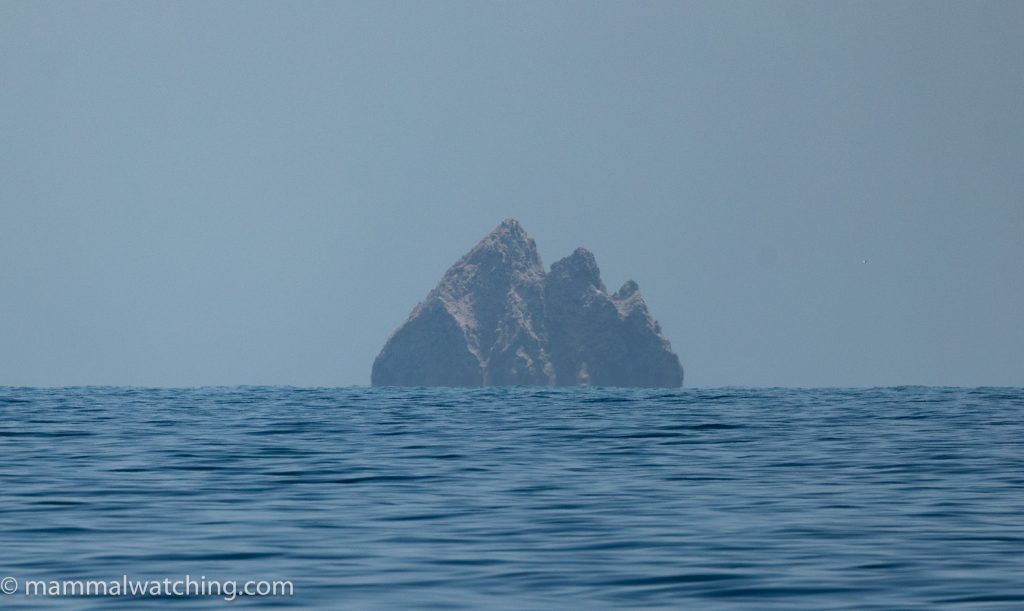
Consag Rock: if you see a Vaquita you can probably see this too.
A couple of weeks later Todd got back in touch with good news. I might – probably – be able to come out on the boat. I have no idea how Todd managed this feat of persuasion but he immediately jumped to the top of my “people who can use my nuclear/zombie apocalypse bunker” list. Sorry kids … but there isn’t room for either of you anymore, not now Todd is on the list and I realise the dog would enjoy a bit more space to run around.
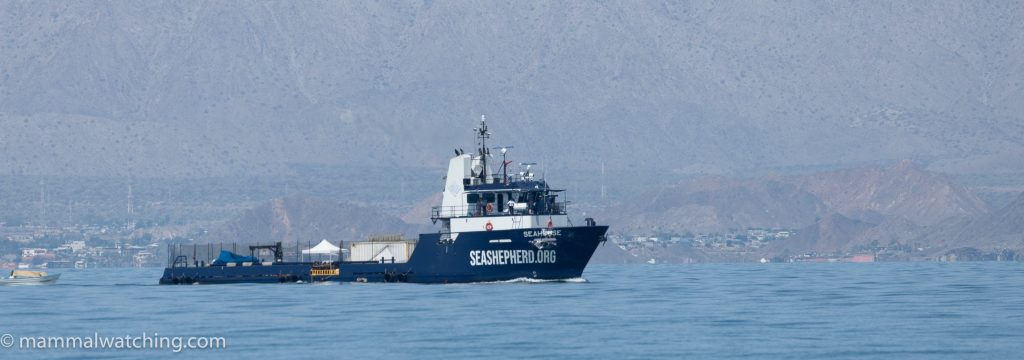
The story was far from over. The next day Todd wrote to say that I probably could not come out after all. And so it continued, day by day, for a week. More plot twists than the collective films of M Knight Shyamalan, and more stress than a room full of Democrats watching Joe Biden debate Donald Trump last night. It is a wonder I am still alive to write about it all. Really!
So I put my faith in Todd and hoped for the best. And Todd came through. All hail Todd.
In late May I was in the small town of San Felipe – about 5 hours from Tijuana – frantically checking the weather forecast every 10 minutes and hoping for calm seas.
The Vaquita survey had been running for more than 2 weeks by the time I arrived. Survey effort was focused on a protected area of the Sea of Cortez- the zero tolerance area (ZTA) – a few miles off of San Felipe. The ZTA is thought to be the core of the Vaquita’s range and fishing inside it is prohibited. But fishing all around the edges is not.
The wind had been stronger than expected for much of May. If the wind speed reaches 10 knots (about the point at which the first white caps appear) survey effort is halted because it becomes so difficult to spot Vaquitas among the waves. And the survey had been halted often. But during days of calmer weather the team had seen a pair of Vaquita several times. Probably just the one pair. This was awful news for the Vaquita.
I got my chance to get out to sea on the penultimate day of the survey. I was overly excited the night before. I barely slept, tossing and turning and checking the weather forecast on the Windy App at least once an hour through the night. But the forecast still looked pretty good when I met the research team at 5 am.
Watching the team manage the survey across two boats was fascinating. Todd Pusser, Bob Pitman and others were on the Sea Shepherd’s “Seahorse” ship, which is moored off of San Felipe and spends every day patrolling the ZTA, ready to report illegal fishing to the Mexican authorities. It is an expensive operation but seems to have had an impact in reducing illegal fishing. Four pairs of the famous ‘Big Eye’ binoculars had been installed on the bridge of the Seahorse for the survey, and these were operated by a rotating group of observers. I was on the smaller La Sirena de la Noche ship, along with a mix of researchers and community members. The two ships criss-crossed the ZTA in parallel.
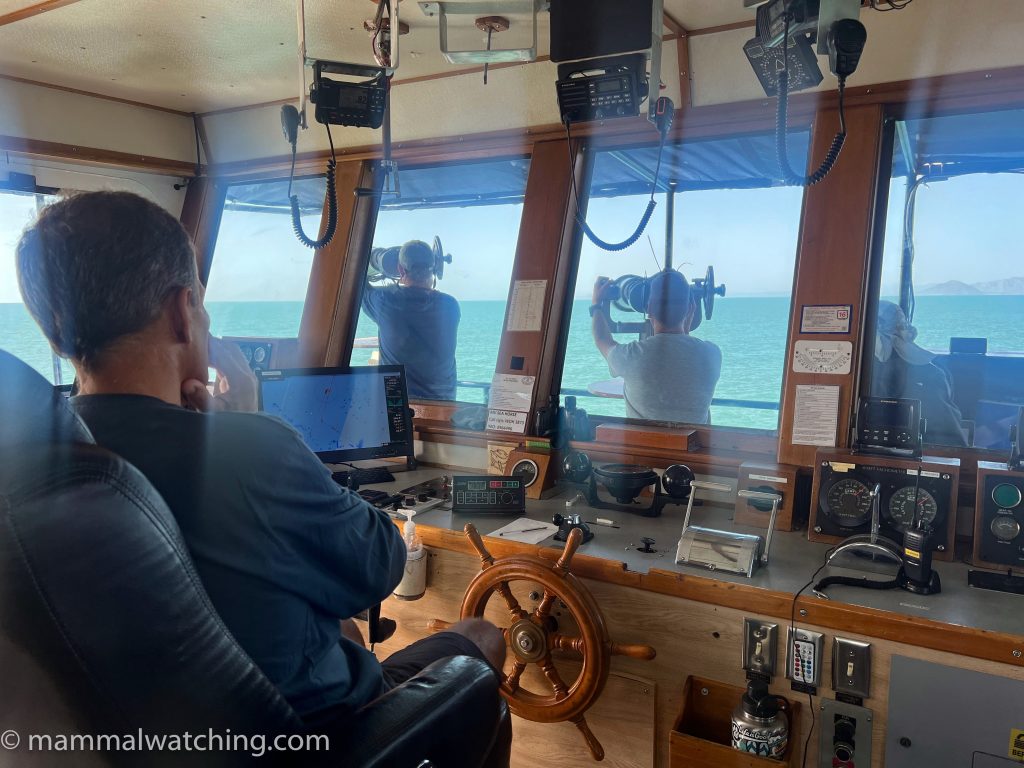
From the bridge of the Seahorse
I wore my lucky hat. In fact the fame of my lucky hat already reached the research team and may well be the real reason they let me on the ship. Two hours into the day the radio crackled. “There are a pair of animals on your starboard side. At your two o’clock”. A few seconds later I was looking through my bins at a pod of four Vaquita.
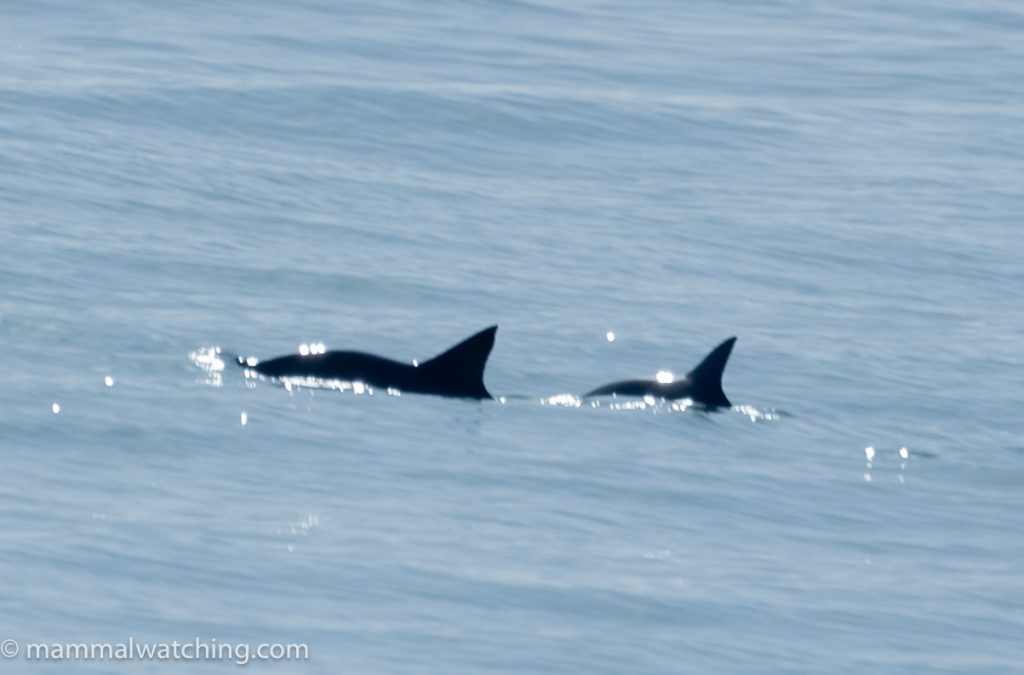
Vaquita, Phocoena sinus
To say this was a magical sighting doesn’t do it justice. Nor does the word ‘bittersweet’. My eyes were tearing up: I had actually seen a Vaquita! And they were tearing up because of the reaction from the team: four ‘new’ animals, when the night before there was talk that there might only be two Vaquita left! And then I wondered whether this might be the last time anyone sees this species alive.
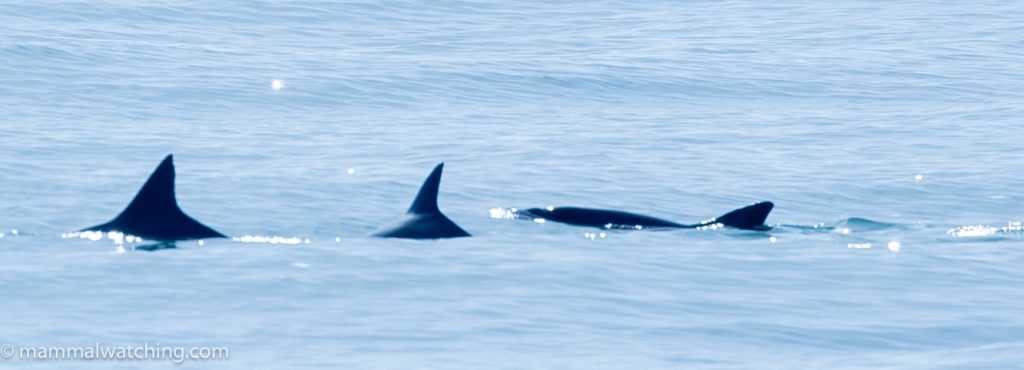
Vaquita, Phocoena sinus
We spent 15 minutes or so following the pod before we lost them. The drone operator got some great footage that is included in this Sea Shepherd reel, which does a great job in showing why these creatures are so hard to spot.

Vaquita, Phocoena sinus
Despite the flat calm seas, and a dozen highly skilled observers, we lost them. A reminder of how difficult these animals are to find.
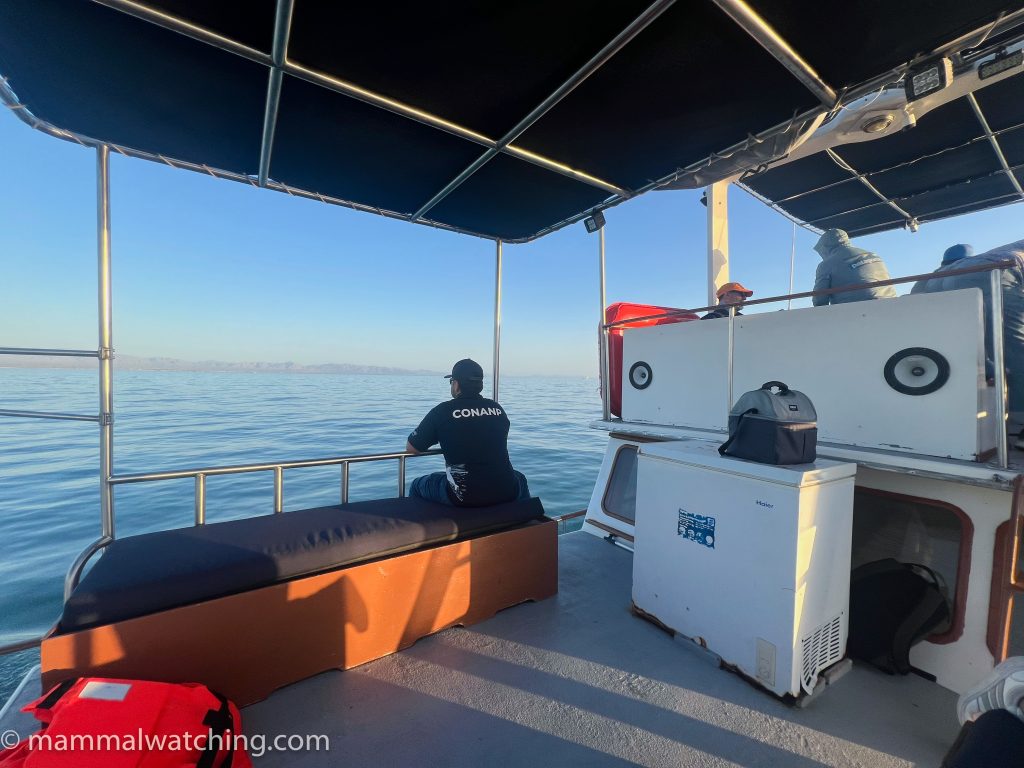
Searching from La Sirena de la Noche
I slept well that night, for the first time in weeks, and went out the next morning on the Seahorse for the last day of the survey, I got to look through the Big Eyes for myself and see mission control in action. But the wind got up and after a few hours Barb Taylor, the chief scientist, called the end of the the day and the end of the survey.
Out at sea over the two days we saw two Bryde’s Whales and California Sealions. A brief spotlight at 9pm near the San Felipe airport produced a Round-tailed Ground Squirrel, a few kangaroo rats (Merriam’s most likely) and a Black-tailed Jackrabbit.
Many many thanks to the dedicated, inspiring and very friendly Vaquita team for letting me come out with them. I met some fascinating people but especially want to thank Barb Taylor, the survey’s Chief Scientist, Nina Young from Sea Shepherd, Lorenzo Rojas-Bracho from CONANP, as well – of course – as Bob Pitman and Todd. It was also good to finally meet mammalwatcher Adam Walleyn who had been hired as one of the observers.
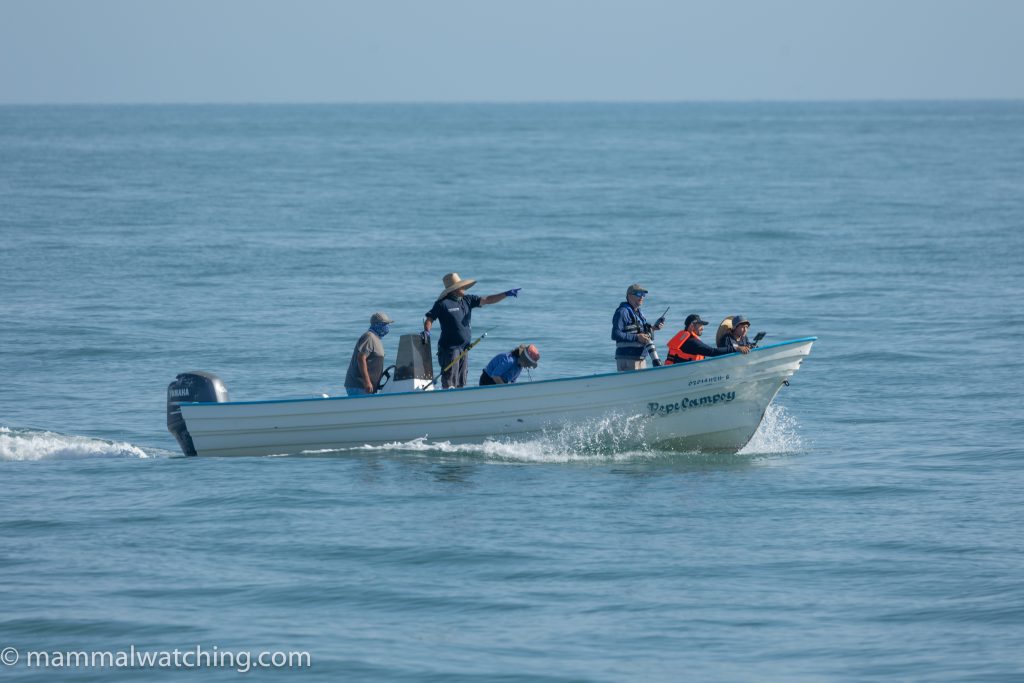
Todd approaches the Vaquita for photos and eDNA
I imagine a few people reading this will want to know whether they can get out on a trip to see a Vaquita. I am afraid I don’t know. I may have been the first guest on the survey in 20 something years. And my presence was thanks to Todd singing the praises of this website, the podcast and my lucky hat. So I have no advice I’m afraid, nor any suggestions of anyone you can talk to, other than to consider making a large donation to – or volunteering to work with – the Sea Shepherd organisation. Perhaps your stint as a volunteer could coincide with a future survey. It would be a worthwhile way to spend your time and money in any case.
Here is the press release from the 2024 survey. There was a lot of media coverage.
Post author
7 Comments
-
-
Sebastian Kennerknecht
I too will hold onto hope that the vaquita recovers, despite its future looking so grim. The conservation story is so complex and the situation doesn’t seem to have changed much for the positive in the last decade, which doesn’t bode well for the porpoise. If things don’t change, and change quickly, I don’t see how they recover. It is an absolute tragedy. Glad you got to see four, you may very well be one of the last people to have done so. I really hope that isn’t the case.
On a happier note, Rachel (my wife) and I got married in Bahia Los Muertes, and your photo of Felix with the restaurant behind him brought back great memories. Random side note, while researching the site for the wedding we learned its called the Bay of the Dead because of the “dead-man” mooring anchors set over 150 years ago.
-
Sebastian Kennerknecht
Luckily the ceremony was interrupted by birds only, so not to worry, things progressed as planned, haha. It was brown pelicans (my favorite bird!) plunge diving, so it was actually pretty cool. Yeah, not sure if you heard but the developer gave it a new name, bay of dreams. All the locals obviously still call it bay of the dead.
Looking forward to the podcast!
Leave a Reply
You must be logged in to post a comment.


tomeslice
Shit man, well done!
Congrats!!
I read the survey – it says that while the numbers are worrying, they only surveyed 12% of the total known Vaquita area.
All I can do is hang onto that statement with some optimism and hope.
I wonder if they’ve taken DNA from Vaquitas so that they can revive the species in the future if it goes extinct 😞
Cheers,
Tomer